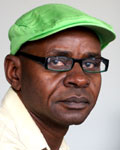Digital broadcasting won't affect radio - SABC
“Digital migration only affects analogue television. There are currently no plans to replace FM services, which will still be around for quite some time,” the Auckland Park-based corporation says in its DTT guidelines' report titled ‘SABC - Moving towards a Digital Future'.
“Digital audio broadcasting (DAB) and digital radio mondiale (DRM) are digital radio offerings that can be deployed by broadcasters,” the public broadcaster says, adding that it is currently developing a digital radio strategy to be used in the near future.
Allows for efficient use
It is understood that DAB is a method transmitting radio signals using terrestrial radio transmissions. It allows for more efficient use of the frequency spectrum than traditional FM by fitting nine or more channels into a single frequency.
DAB eliminates the interference common on current FM transmissions as the receiver is able to select the strongest signal.
DRM, however, is a universal digital system for shortwave (SW), medium wave (MW) and long wave (LW), and uses frequencies below 30Mhz. DRM can fit in more channels at better quality than the current analogue.
“DTT (digital terrestrial transmission) is not in any way a replacement for the current FM broadcasting but adds great value if they are included in the service offering,” the SABC says.
“Plethora of opportunities”
“DTT provides a plethora of opportunities for radio in terms of generating new revenue streams.
“DTT can be used to provide for existing FM services where they cannot be extended to frequency congestion. Through its capabilities, DTT can provide value-added services such as interactive services, teletext, graphics, traffic information, weather, stock markets and more to existing radio services.”
Furthermore, the public broadcaster states that there will be no high definition (HD) for its digital programming, but this could be a possibility over the next few years.
Lastly, the public broadcaster reminds viewers that they would not need a satellite dish to receive DTT, but only a set-top box (STB, also known as decoder) plugged in their TV sets to receive the digital signal.
DStv viewers will also need to purchase an STB despite owning DStv decoders because the DTT STB is not the same as the MultiChoice satellite decoder or the current M-Net STB, continues the SABC, adding that the purpose of the DTT decoder is simply to decode the digital signal to enable the channels to be displayed on the TV set.
Estimated cost
The estimated cost of each DTT decoder will be between R600 and R700 and can be installed by a professional installer.
Minister of Communications Ivy Matsepe-Casaburi said that Cabinet has already approved a 70% ‘Scheme for Ownership Support', a R2.45 billion initiative aiming at rolling out free STBs to SA's five million poorest households, mostly those surviving on grant system.


















